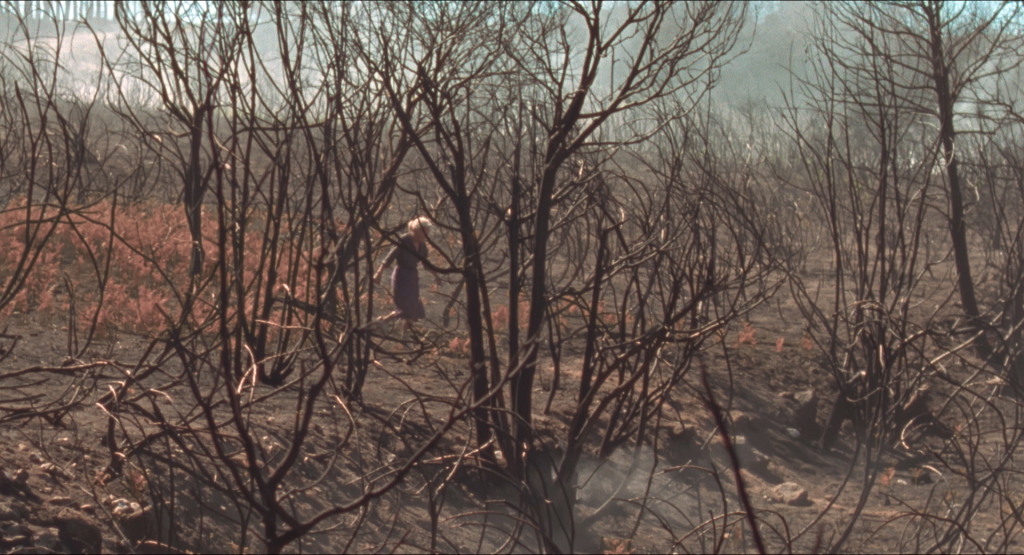FIRE WILL COME (O Que Arde)
Kimstim
Reviewed for Shockya.com & BigAppleReviews.net linked from Rotten Tomatoes by: Harvey Karten
Director: Oliver Laxe
Screenwriter: Santiago Fillol, Oliver Laxe
Cast: Amador Arias, Benedicta Sánchez, Inazio Abrao, Elena Mar Fernández, David de Poso, Alvaro de Bazal, Damián Prado
Screened at: Critics’ link, NYC, 3/5/20
Opens: October 30, 2020
If you are a dedicated film goer especially one who attends highbrow film festivals like NYFF, you might compare Oliver Laxe to Terrence Malick. Malick’s movies, e.g. “Tree of Life” which is about a young man struggling through conflicting parental teachings, have sometimes been compared with watching paint dry. Laxe, who was born in Paris and filmed “Fire With Come” in northwest Spain in a rural area near Lugo, may informally compete this year for directing the most glacially-paced picture. Glaciers notwithstanding, “Fire Will Come” features one of the hottest, actual blazes you are likely to see in the movies this year. The film, which is surely not plot-centered, is not even character-focused but more to the point is nature-dominated. Forest scenes involve three cows, each with its own name, led around the woods to graze, Amador (Amador Arias) leading the pack of three bovine creatures, his German Shepherd Luna bringing up the rear. Laxe, in his third feature following up his movie “Mimosas” (a dying Sheikh wanders about the Atlas Mountains), wants us to feel the rhythms of rural life a few hundred miles from bustling Barcelona but so apart in culture you might think he is directing on Pluto.
There is but one melodramatic moment involving human beings in a picture that is not unlike last year’s “Honeyland,” about the last female beekeeper in Europe struggling to defend her turf against some competing beekeepers who are vulgar and pushy. The strongest relationship in “O Que Arde,” which is in the Galician language with similarities to Portuguese, is between Amador and his aging mother Benedicta (Benedicta Sánchez). The other melodramatic moments open the film after a long, blank-screen pause, featuring machines blazing through the forest cutting down large trees as though the construction workers are Brazilians ruining the rain forest to make room for animal grazing.
With the principal actors bearing their actual names throughout the film, we get the impression that the fictional aspects of the story are closely based on real events. Amador has just returned to town after a two-year stint in prison for starting a fire. Though a pyromaniac who is looked upon with fear and loathing by the villagers, Amador conveys the impression that he is a simple farmer whose capital goods are three cows that give milk to support him and his mother. Still, the people of the town who are at all close to the small family, are eager to learn about Amador’s health, while a veterinarian who visits to treat a cow backs away from an invitation to share a drink because she is “busy.”
The image that stays with me is that of Amador’s dealing with a reluctant cow, something like my late terriers who loved to challenge their human companion by refusing to move. Amador pulls and tugs, but simply cannot prevail against a huge animal going on strike after producing milk and gaining no particular reward save for the free grass. The unappreciative cow should thank whatever deity he or she favors for living a life out in the open and avoiding obesity as the cow is not forced to eat corn.
You won’t discover Stephen Colbert’s wit in Amador’s conversations with his mama, but if you want to know why one fella in the musical “Tuscaloosa” prefers New York to a small town, you might come away from this movie happy to live in a teeming city with all of its chaos and to visit the outskirts of Lugo for six hours at most.
86 minutes. © 2020 by Harvey Karten, Member, New York Film Critics Online
Story – C
Acting – B
Technical – B+
Overall – B-

